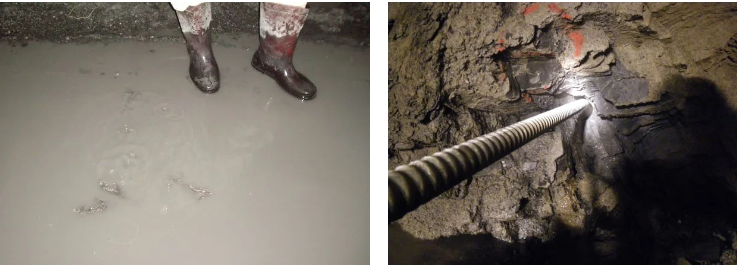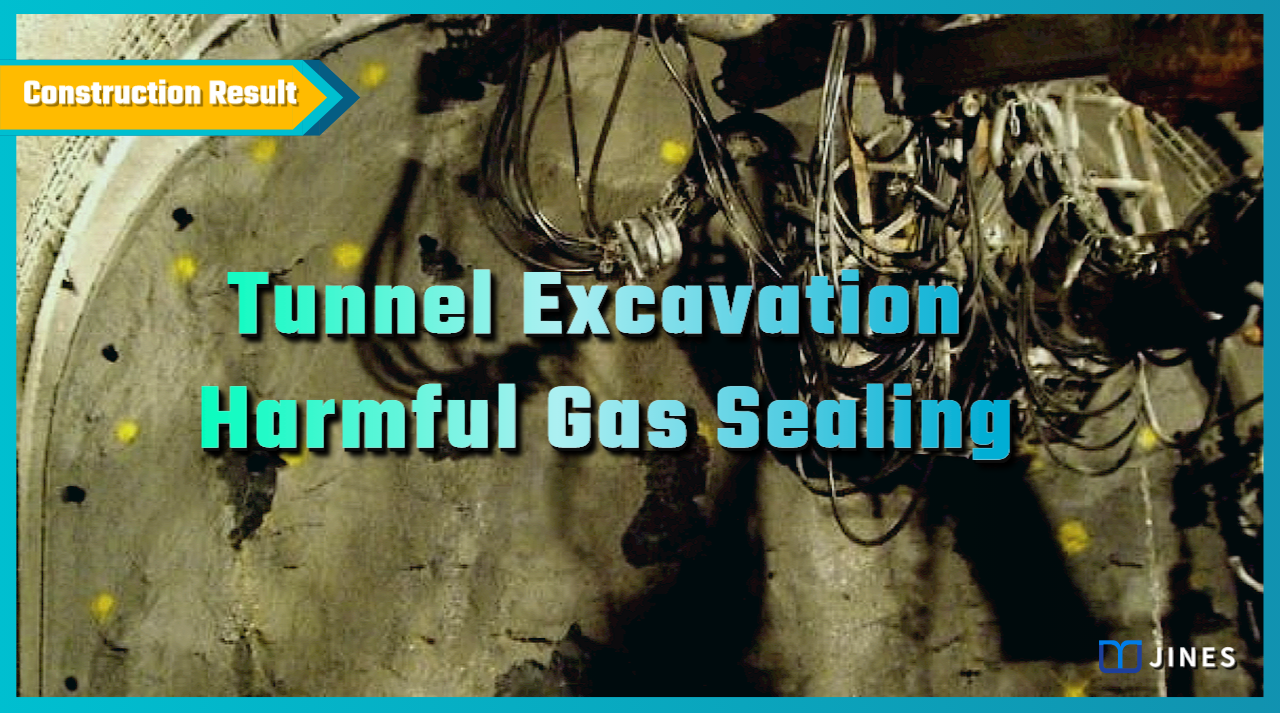
TUNNEL EXCAVATION HARMFUL GAS SEALING
Gas-stop grouting technology in rock formation
1. Project Background
During the excavation of a tunnel, combustible gas was found to be escaping from fissures in the rock formation, with concentrations exceeding 1.75%.
The construction unit immediately ceased drilling and blasting work, and carried out exploration holes to investigate the gas accumulation in the rock formation.
It was found that there were multiple areas of combustible gas accumulation inside the rock. The amount of gas escaping increased with disturbance, decompression, and displacement of the rock mass.
As the original design of the excavation face with shotcrete did not have a gas sealing effect, the construction unit commissioned an experienced company to develop a remediation plan to prevent the concentration of combustible gas from becoming too high and causing harm.
After the plan was reviewed and approved, it was handed over for implementation.
―
2. Solution
To prevent the continuing leakage of combustible gas from the rock formation in this area, which could lead to a cumulative concentration reaching the lower explosive limit (LEL), a solution was developed with a requirement to handle concentrations of combustible gas greater than 0.25%.
The treatment methods were divided into two categories: “advance grouting for unexcavated section” and “gas-stop grouting for excavated section”.
Additionally, in accordance with the characteristics of gas-stopping/sealing, the following requirements were proposed for the grouting materials:
(1) No volume contraction after solidification;
(2) No harmful gas produced during works;
(3) Low viscosity and easy penetration and diffusion;
(4) High long-term stability and not prone to decomposition;
(5) Non-toxic and non-corrosive;
(6) High strength and toughness after solidification;
(7) Good consolidation effect in fractured rock formations, colluvium and gravel layers;
(8) Short solidification time.
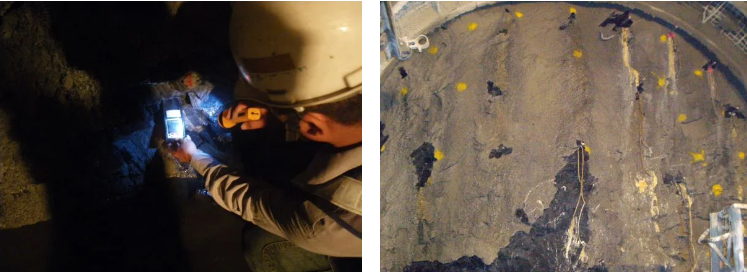
―
3. Works Design
(1) For the unexcavated section, a modified 8-meter length dual-wheel drilling rig is to be used to install grouting pipes and expansion rings at different angles. The peripheral holes are to be injected first, followed by the front holes. The improved excavation distance not to exceed 6 meters.
(2) For the excavated section: grouting to be conducted in sections no greater than 10 meters. Vertical layer drilling carried out using a vertical pneumatic TY drill with each hole drilled to a depth of at least 3 meters. After reaching the design depth, bury the grouting pipe and expand the ring, and the grouting process is immediately carried out.
(3) After each section is grouted, two inspection holes are drilled to check for gas leaks. The depth of the inspection holes is consistent with that of the grouting.
(4) The effective sealing target is determined based on the principle that the concentration of combustible gas collected from the inspection holes is less than 0.25%.
(5) The grouting material used is a low-viscosity, two-component, non-solvent, non-expanding polyurethane resin TIPOR-01A with a curing strength of over 35MPa.
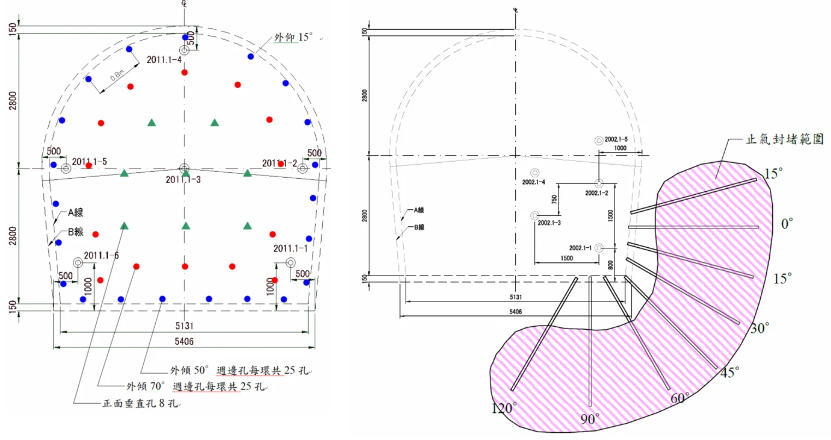
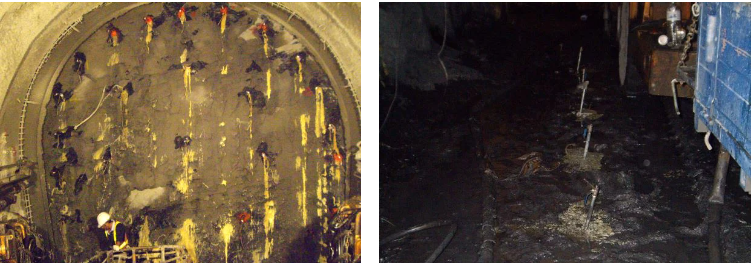
―
4. Works Process
Polyurethane resin is suitable as a gas-stop grouting material due to its stable reaction time, good filling effect, non-shrinkage after solidification, high compressive strength, and good adhesion to rock and granular soils.
Low-viscosity resin was specifically selected as the grouting material for this project.
However, due to its inherent viscosity, a maximum design grouting pressure of 7MPa was set to ensure sufficient sealing of fine cracks.
During the construction process, the grouting flow and resin overflowing from the cracks were monitored, and the grouting pressure was adjusted accordingly.
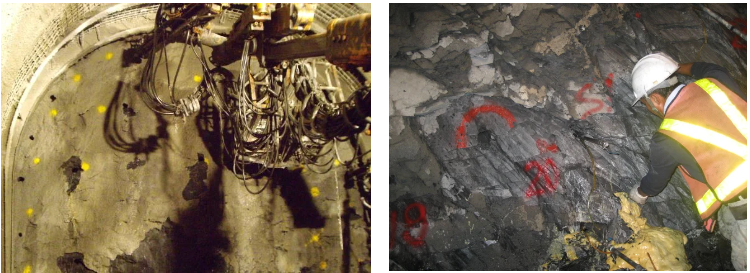
―
5. Results
After the advance grouting and gas-stop grouting in the excavated section, the gas detector at the tunnel working face indicated that the concentration of flammable gas had met the safety standards.
To ensure the safety of subsequent construction, the construction unit added tunnel ventilation and exhaust facilities and appropriately increased the thickness of shotcrete.
Multiple measures were provided to prevent harm caused by flammable gases.
With the cooperation of all parties, the gas sealing work for tunnel excavation was successfully completed.
―
Tunnel Excavation Harmful Gas Sealing
將下載檔案寄至:
・More Construction Result Sharing
Contact us:+886 2769-2355
Copyright ©Jines Construction Co.,Ltd
